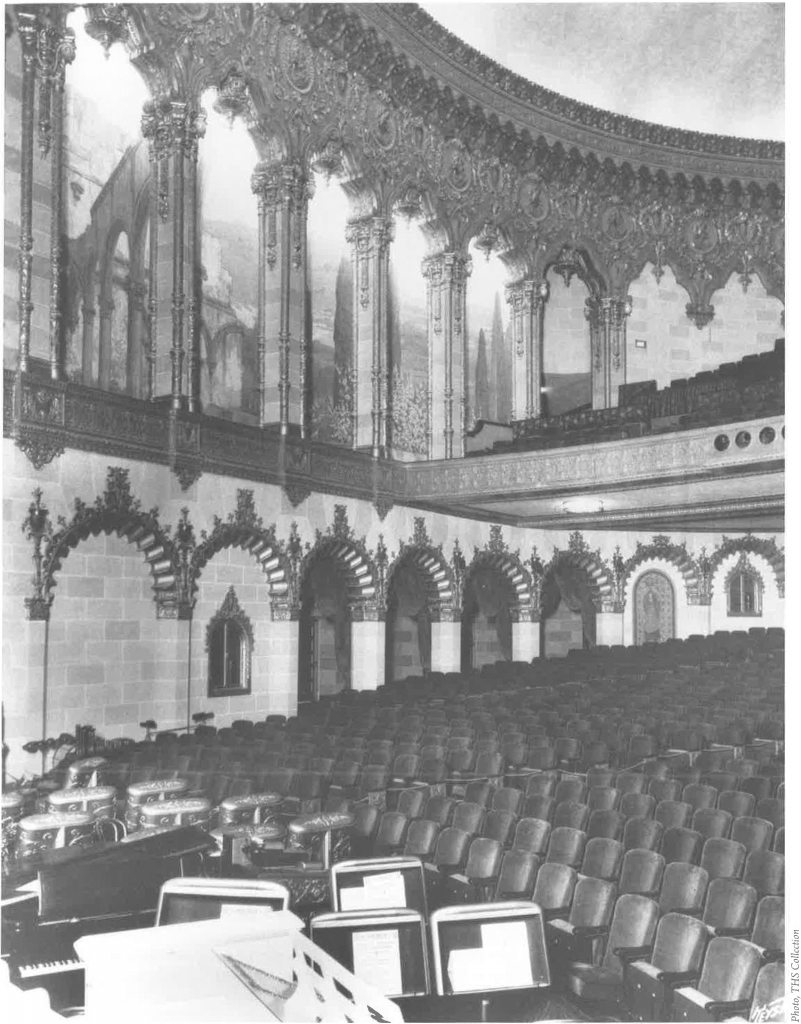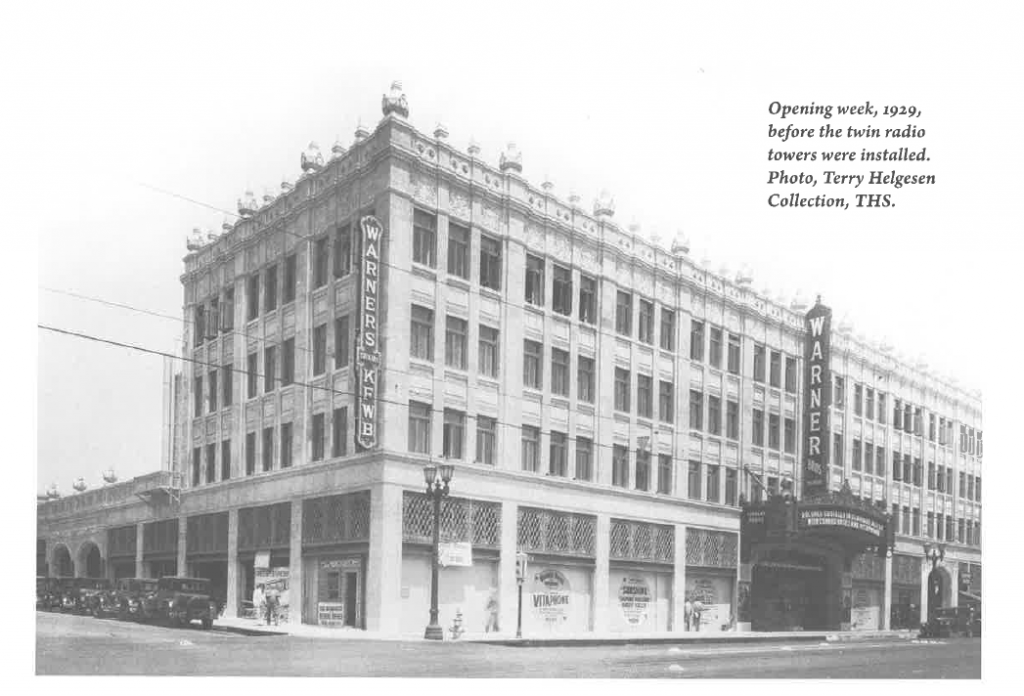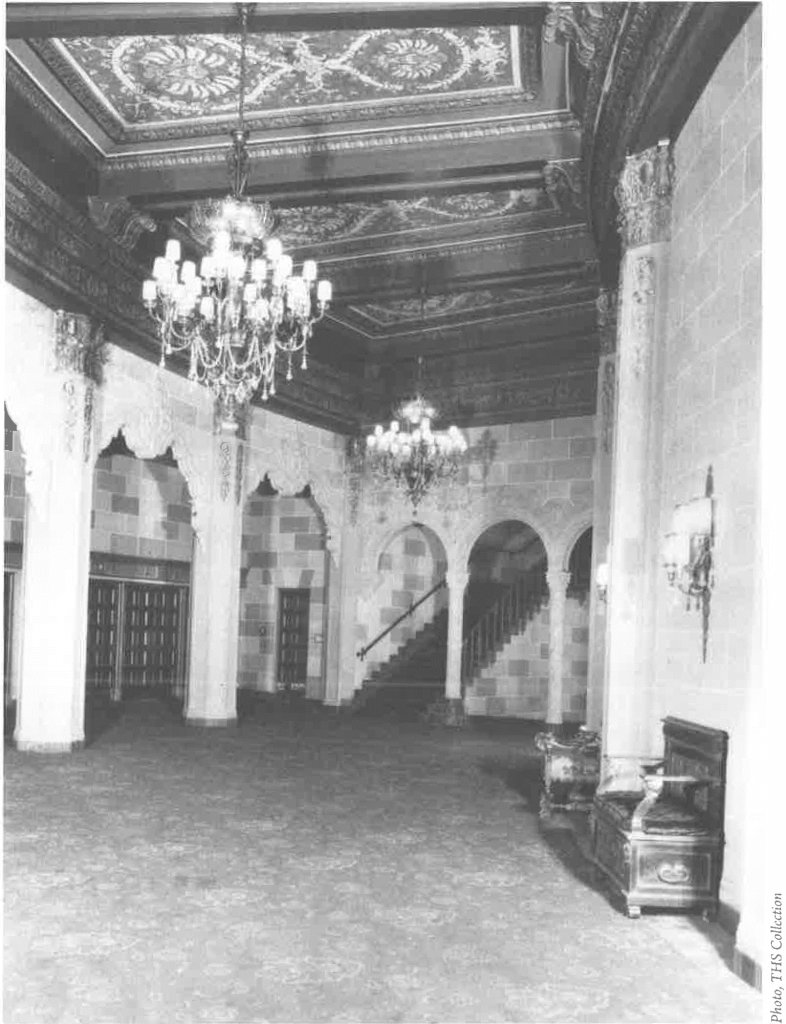Warner Theatre Hollywood: The Gem of Gems

Sitting discreetly behind store fronts and three floors of offices rests one of Hollywood’s most unique and forgotten picture palaces, the Warner Theatre. While one would never guess such a distinctive theatre exists there today when walking past boarded up shops, a dilapidated marquee, and a blocked off lobby, its rich history places it firmly as one of the more notable theatres in the community at the time. The Warner Theatre in Hollywood marked the entry of Warner Brothers Studios into the theatre operation business in California, and they would eventually grow to become one of the most prominent.
The Warner Theatre was important in the Hollywood area overall not because it reached landmark status or made news across the nation, but because the theatre was unique in its simplicity of style and consistent business longer than some other major theatres along the same street. There was competition in the area of course, with Sid Grauman’s exotic theatres just down the block, ad the largest theatre in Hollywood just two blocks to the west. The Warner Theatre brought the revolution of sound films into Hollywood when it opened and grew over time to establish itself as a theatre to watch, as well as propelled the Warner Brothers Theatre chain to greater heights both in the city of Los Angeles and across the nation. What kind of theatre was the Warner Theatre and what kind of business did it do? Its value to the Hollywood community has been widely overlooked in the past and is well worth a second glance.

The picture palace had existed in the United States since 1913 with large opulent theatres springing up all over the country, but the trend did not reach the community of Hollywood, California until Sid Grauman changed everything in 1922. Grauman, the legendary showman, had owned theatres in Northern California before making his mark in downtown Los Angeles in 1918 with his Million Dollar Theatre. His second venture in Southern California produced the Egyptian Theatre in 1922, Hollywood’s first true movie palace. Its exotic Egyptian-themed auditorium and forecourt drew people in from Hollywood Boulevard and provided a great space for splashy movie premieres. Grauman is credited with creating the “Hollywood premiere at the Egyptian: klieg lights, crowds in bleachers, [and] stars entering on a red carpet.”
He followed the success of the Egyptian Theatre with The Chinese Theatre in 1927 with its instantly-recognizable, oval-shaped forecourt and towering red pagoda-like entrance. Grauman’s Chinese Theatre quickly became one of the most recognizable theatres in the world, and remains so to this day. Competition in the theatrical exhibition business had not yet become fierce with only a few theatres showing films along Hollywood Boulevard, and none of these theatres had yet to be owned and operated by a major studio. The area directly around the Warner Theatre only had one or two neighborhood theatres at the time, including the Iris theatre, located just across the street.
This changed in May, 1925, when Warner Brothers announced it would build a theatre at the intersection of Hollywood Boulevard and Wilcox Avenue that would seat 4,000 and cost an impressive $1.25 million (though this figure would inflate to $2 million by the time construction was complete). Warner Brothers, fueled by Wall Street investors, was in the midst of a major expansion by starting radio stations and purchasing theatres, and the new theatre was another step in that process.
A ground-breaking ceremony took place on January 2, 1926, with Harry and Jack Warner leading the ceremonies viewed by more than 1,000 spectators and a handful of celebrities. Acknowledging the new competition in the neighborhood, Sid Grauman sent a hearse and two mourners with cards that read, “Success to Warner Brothers, Sid Grauman.” The playful exchange went both ways as Harry and Jack Warner buried a dummy in effigy, placing signs that said “here lies King Sid Grauman. Your hair will wave no more.” Perhaps Grauman had reason to worry as, starting the next day, construction would begin on the largest movie theatre in Hollywood, a theatre that would prove to have a few aces up its sleeve.

Construction on the four-story complex – including theatre, office, and broadcasting space – lasted about fourteen months. Sam Warner, who was intimately involved with the design and construction of the theatre, chose San Francisco-based architect G. Albert Lansburgh to design the theatre. Lansburgh was no stranger to theatre design, having created over fifty theatres throughout the country, including prominent theatres in Los Angeles like the Orpheum, Palace, El Capitan, and the Warners Western Theatre (which would later be renamed the Wiltern Theatre).
The Warner Theatre that Lansburgh was designing would be the first theatre designed specifically for sound in Hollywood. Warner Brothers announced on April 14th, 1928, just two weeks before its opening, that the theatre would feature “the most advanced and largest Vitaphone equipment ever installed:’ In fact, Warner Brothers had intended to premiere The Jazz Singer (dir. Alan Crosland, 1927) at their new Hollywood theatre but had to instead premiere the film downtown at the Criterion Theatre on December 28th, 1927 because of the construction delays. While the Warner Theatre was the first in Hollywood to be built specifically for sound, the Tower Theatre downtown held the title of the first theatre in Los Angeles to be built for sound. Sam Warner and Lansburgh planned the theatre with a wide variety of luxuries not common for existing Hollywood theatres, and a style for the auditorium subtler than most movie palaces being built at the time.
The Warner Theatre building was not unlike many of the picture palaces found downtown, or across the country, wherein storefronts and offices made up the bulk of the front of the building. Space for three or four retail stores flanked the entrance to the theatre, an elaborate marquee protruded from the front of the building over the sidewalk and along the side of the building up to the roof. This original marquee featured elaborate metalwork and space for lettering on the front and sides) though, unfortunately, it did not last long as it was replaced several years later. The floors of office buildings were located along Hollywood Boulevard as well, with the top floor being reserved as broadcast studio space. The Warner brothers made the decision to locate KFWB, the radio station they started in 1925 (the call letters stood for Keep Filming Warner Brothers) and placed two working broadcasting towers atop the building to send the signal out across Los Angeles. Because of the smaller size of the lot, the auditorium was set at an angle, placing the screen at the northeast corner of the building. This layout was unusual for the time and allowed for a larger auditorium, as well as several luxurious amenities not yet seen in other area theatres.
If you find this story fascinating, we have a treasure trove of information about the history of your favorite theatres. Sign up for an account on historictheatres.org and enter through the STAGE DOOR!
For nearly fifty years Theatre Historical Society of America has been celebrating, documenting, and promoting the architectural, cultural, and social relevance of America’s historic theaters. However, we can’t do it alone. Support from cinema lovers, architects, historians and people like you are paramount to our success. Become a member today, and help us preserve the rich history of America’s greatest theatres.
